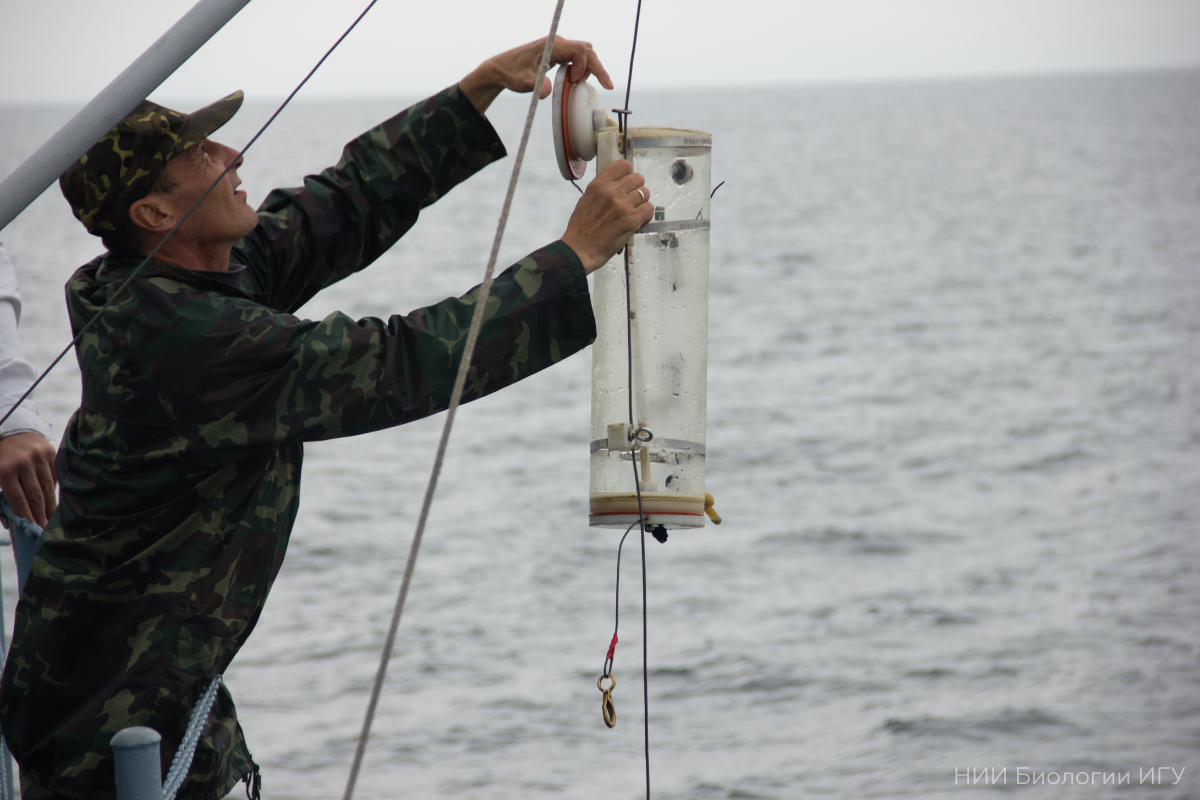Thanks to the two-year grant support of the Lake Baikal Foundation, the Institute of Biology of the Irkutsk State University continues the long-term ecological monitoring program for Lake Baikal, Point No.1, which means that sampling and analysis of the condition of Baikal phyto- and zooplankton goes on!
Regular sampling takes place every two weeks and is conducted continuously since February 1945 at the «pelagic stationary station No. 1». The station is located in South Baikal, opposite the village of Bolshie Koty 2.7 km away from the coast and on depth of about 800 m against the biology station of the ISU Institute of Biology. Samples of phytoplankton are taken every 7-10 days from the depth of 0, 5, 10, 25, 50, 100, 150, 200, 250 m, and from the layers 0-5, 5-10, 10-25, 25-50, 50-100, 100-150, 150-250 m samples of zooplankton are selected. Then samples are delivered to the laboratory, where they are analyzed under a microscope. All the data obtained in a detailed analysis of more than 700 forms of zooplankton and more than 400 forms of phytoplankton are recorded in a unified computer base.
Such scientific research is necessary to monitor the state of Lake Baikal, since the water quality in such a large lake is by 90% determined, same as in the ocean, by the state of its plankton community. Given the fact that quantitative and qualitative characteristics of plankton change all the time, it is necessary to provide regular monitoring and sampling. And only these decades long observations make it possible to identify fundamental trends in the Lake Baikal ecosystem.
As the results of 72-year observation, the following trends were revealed:
- a decrease in the abundance of large-cell endemic Baikal under ice algae and endemic sub-ice Baikal rotifers;
- an increase in the number of cosmopolitan small-cell algae, cosmopolitan summer rotifers;
- the biodiversity of subglacial algae is closely related to the under ice water temperature – the lower the water temperature, the more endemic algae species develop there and, conversely, the higher the temperature, the more the proportion of cosmopolitans is.
This information is important for understanding the processes taking place in the ecosystem of Lake Baikal and its response to global climate change. Plankton monitoring should be continued to ensure that the detected trends are reliable. If primary observations are confirmed over longer periods of time, global changes actually take place, and they are serious enough so that even such a conservative and inertial system as the ecosystem of the giant Lake Baikal notices them and reacts to them accordingly.


